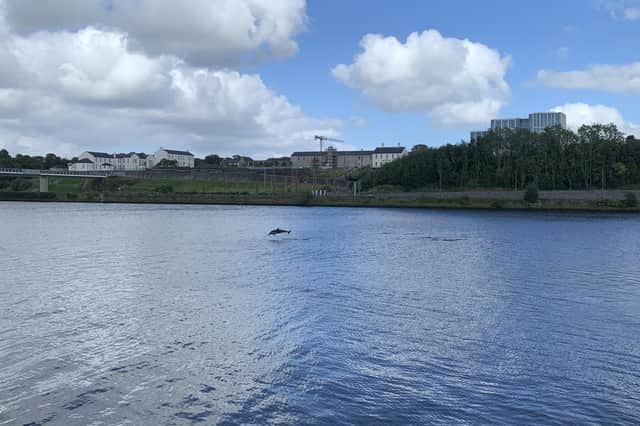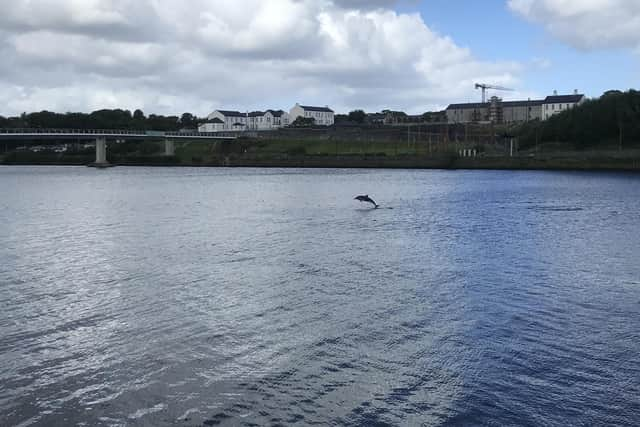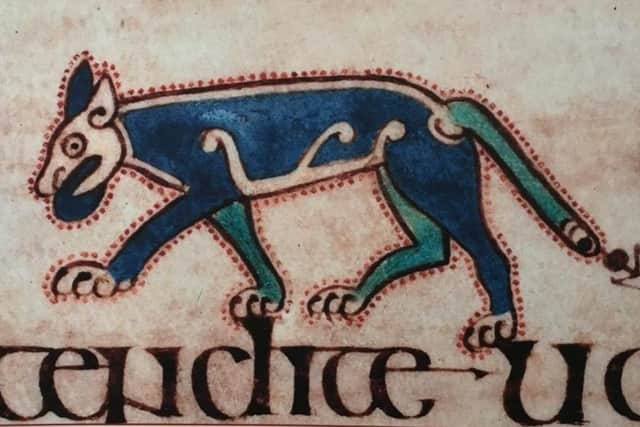Mick Conway says humans would benefit by becoming closer to nature, just as their ancestors were


People in the past were necessarily in far more contact with nature. The most perceptive of them, the saints, the poets the visionaries appreciated how important our contact with the natural world was, not just for survival but because it enhanced our humanity.
In the ancient world certain natural events were believed to be augurs. The flight of birds was seen in ancient Rome as a way of predicting the future. Famously the site of Rome was chosen in a bird spotting contest between Romulus and Remus. It was twelve vultures to six in favour of Romulus so Rome was founded on the Palatine Hill. This feat of augury was not supported by Remus who was killed by Romulus or his supporters. Predicting the future has always been a mug’s game. Taking note of the important things in our lives to preserve them for future generations is another matter.
Advertisement
Hide AdAdvertisement
Hide AdIn a church during a recent visit to Spain, among the many plaster saints, I was surprised to see one statue of a saint with a pig at his feet. This was St Anthony. Not the one who is a dead cert for finding lost car keys but the 3rd century desert father credited with inspiring the later monastic movement. Along with St Francis he is seen as the patron saint of animals especially in Spain. The pig represents what he did in his early life, he was a swineherd. I was slightly suspicious of the presence of a plaster pig in a church given the Spanish regard for all kinds of ham.


Our own St Patrick was an exception in the canon of saints in that he does not appear particularly fond of animals. This can be explained because he spent six years as a slave on Slemish mountain as a swineherd. What we do know is that he was not fond of snakes. Legend has it he banished them all from Ireland. The truth should never interfere with a good story but we now know that Ireland did not have snakes to banish. They never made it here as the rising sea blocked their sinuous return at the end of the ice age.
Brian Lacey holds that our local hero St Columcille can only be understood in terms of history, legend and myth of combinations of all three. Columcille was given two animal names. He was originally called Crimthann, the fox, but later was known as Colm, the dove. The two names are indicative of a multifaceted personality. He was known to be fond of animals.He kept a very unusual pet a heron.
Predicting the death of the saint on Iona, the white horse that had served the monastery for many years came up the saint and drenched him with his tears, (Many the betting man will have known the same emotion but only in reverse). His contact with the Lough Ness monster was less than friendly.
Advertisement
Hide AdAdvertisement
Hide AdThe beast was trying to make a snack of one of St Columcille’s followers but the saint simply made the sign of the cross and banished the beast forever. This story must obviously be filed in the myth box but to do so would ruin much of Scotland’s tourist industry.


One legacy of Columcille that is beyond doubt is his contribution to the monastic movement in these islands. The illustrated manuscripts produced in these remote monasteries is the artistic glory of the age. The most famous of these is the Book of Kells, probably created in Iona but brought to Ireland for safe keeping in the Viking age. The text of the book is testament to the faith of the monks in the gospels.
However, the artistic adornment is a mad menagerie of every possible beast: domestic and wild, native and foreign, real and imaginary. Interwoven with the text are : cats, horses, wolf and lion, numerous fish and dragons.Sometimes these images are symbolic but more often a reflection of the artists love of the natural world which was their home. They are there for the Craic.
A near contemporary of Columcille was St Kevin. Famous for founding the Glendalough monastery he is also known as the world champion bird lover specifically a blackbird. His cell was so small he had to stick his hand outside to accommodate his outstretched arm. He prayed so hard a blackbird began to build a nest in his hand. Kevin waited until the bird built the nest, laid the eggs, incubated the eggs and fed the chicks until they fled the nest. Anyone watching this process in their garden knows it takes about six weeks.
Advertisement
Hide AdAdvertisement
Hide AdSeamus Heaney on his poem ‘St Kevin and the Blackbird’ sees the story not a tale about superhuman endurance but about respect for life as a whole and the need to cherish it:
“Kevin feels the warm eggs, the small breast,
The tucked Neat head and claws finding himself linked
into the network of life eternal”
We think of St Francis as the animal lover par excellence. He has long been seen as the patron of animals. In one story he persuades ‘brother wolf’ not to harry a local village. Spending much of his time talking to birds, is often depicted with a small bird in his hand. His profile has recently been upgraded in 1979 he became to the patron of ecology.
In more recent times our appreciation of nature has been enhanced by the Romantic poets. They lived before the full impact of the industrial revolution.
The mass of the population were beginning to exchange a rural existence for what William Blake called ‘The Dark Satanic Mills’ and all is attendant horrors: overcrowding in slums, polluted air, disease and child labour. It is estimated that in the preindustrial 1700 hours of work per annum was needed to survive. This increased to 2400 in the industrial age. For the rich the new technology and science allowed the increase in capital that allowed them to enjoy a Downton Abbey existence. Superior technology also facilitated the horrors of the slave trade and colonialism. Nature was driven out from the industrial towns.
Advertisement
Hide AdAdvertisement
Hide AdThe development of city parks all over the world relied on the generosity of enlightened philanthropists, visionaries who saw the need to bring nature on a small scale back into the town. Those who planted Brooke Park in Derry never lived to see it in all its glory.
Basic contact with the natural world was beginning to be lost when the Romantics wrote their poetry. Wordsworth’s daffodils, Keats’ nightingale and Shelley’s skylark all emphasise the importance of nature. Dubbed Romantics, they were not idle dreamers. They knew that we were part of the natural world and could not fully develop our humanity without appreciation of it. By Yeats’ time, things were much worse. In the Lake Isle of Innisfree the poet, representing everyman, stands bereft because he has been completely torn from the natural world:
“I will arise and go now, for always night and day
I hear lake water lapping with low sounds by the shore;
While I stand on the roadway, or on the pavement grey,
I hear it in the deep heart’s core”
Visionaries, nearer our own time, have warned against the threats to nature and their impact on our wellbeing. Written in 1962 Rachel Carson’s book Silent Spring warned of the dangers of chemical pollution. Vilified by the vested interests of the chemical companies in her own time, she is now honoured as the instigator of the environmental movement. James Lovelock died only recently. He proposed the Gaia Hypothesis which proposed that the planet earth is self-regulating keeping itself in equilibrium. This may not be accepted by other scientists but what is now obvious is that man’s activities have led to global warming, biodiversity loss and the desalination of the oceans.
The sight of dolphins in the Foyle gave great joy to all those lucky enough to see them. We were united with all those figures in the past who took pleasure in nature. At the same time I felt a certain unease.
Advertisement
Hide AdAdvertisement
Hide AdThere is no doubt that dolphins have become more frequent visitors to Irish waters. Are they augurs of dangers that are already happening and are predicted to get much worse? It may well be that this apparently benevolent phenomenon is actually further evidence of global warming. There is no ignoring the fact that mankind faces many challenges: record temperatures, pollution, wildfires, crop failure, habitat loss, reduced biodiversity and famine.
These problems were anticipated, however vaguely, by the Romantic poets. The rapacious use of fossil fuels in the last 200 years has led directly to global warming. We are in the Anthropocene age where most important impacts on our environment are no longer natural but are caused by man’s largely malevolent activities. We all stand on an even bleaker pavement than Yeats. We need to adopt St Anthony’ and St Francis’s love of the creatures with whom we share our planet or we are in danger of losing some of them forever.
We all need St Kevin’s insight and discipline to see us through the crises we face.
Comment Guidelines
National World encourages reader discussion on our stories. User feedback, insights and back-and-forth exchanges add a rich layer of context to reporting. Please review our Community Guidelines before commenting.